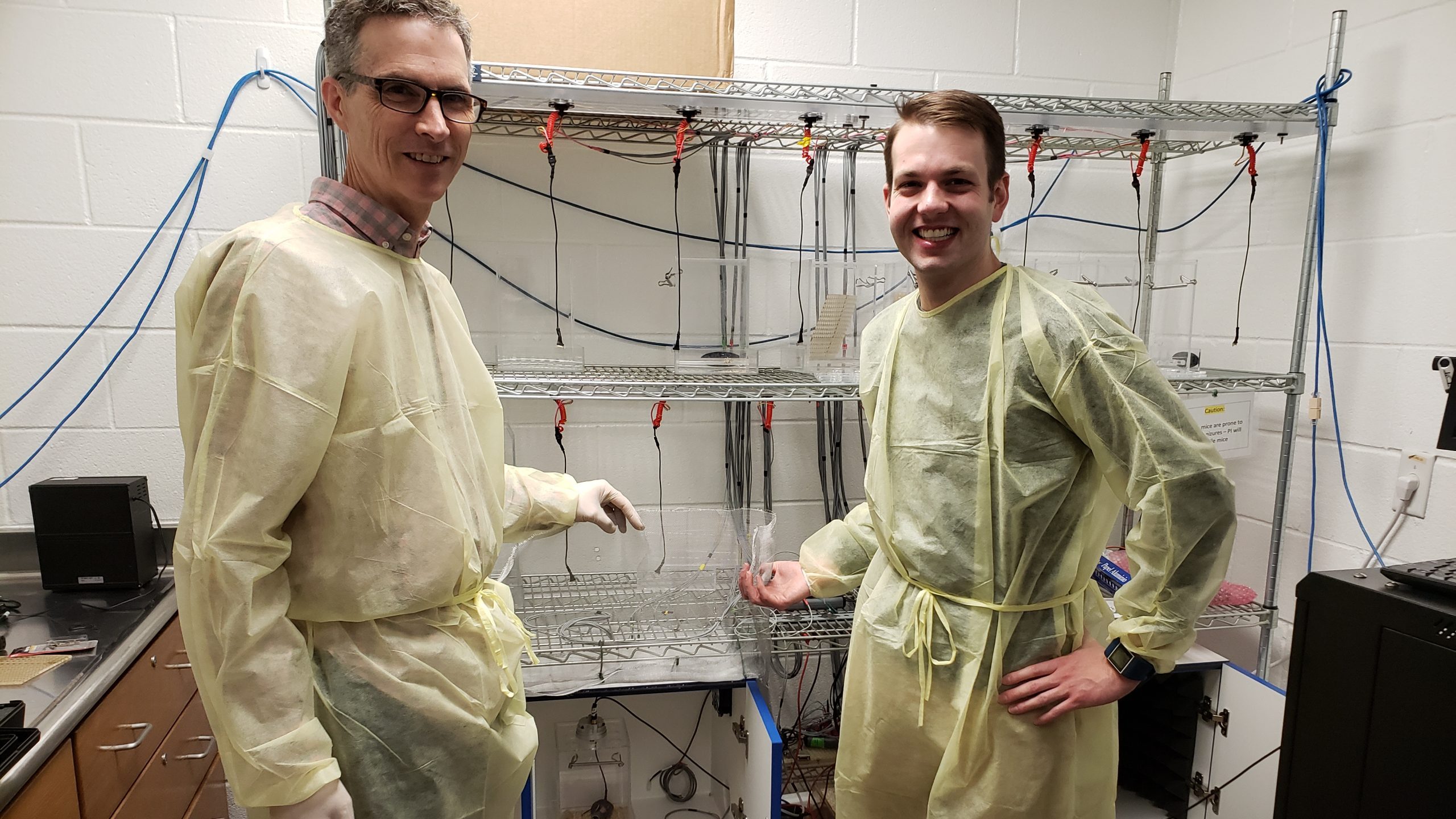Auditory System Dysfunction and Drug Tolerance in the Fragile X Mouse

Principal Investigator
FRAXA Fellow
Dallas, TX
Summary
FRAXA Research Foundation has awarded $90,000 to principal investigator Dr. Jay Gibson and postdoctoral fellow Dr. Andrew Holley at the University of Texas Southwestern Medical Center. They are investigating circuit mechanisms for auditory system dysfunction and drug tolerance in the Fragile X mouse model.
The Science
by Jay Gibson, PhD and Andrew Holley, PhD
Patients with Fragile X Syndrome (FXS) display several clinical features that are reliably reproduced in the mouse model of FXS, the Fmr1 knockout mouse. One of these symptoms, sensory hypersensitivity — especially auditory hypersensitivity — has recently been an area of focus in both preclinical and translational FXS research, due largely to its relative simplicity to study compared to more complex cognitive and social behaviors.
Audiogenic Seizures in the Fragile X Mouse
When sound enters your ears, information about those sounds is first registered in the inner ear and travels from there through the auditory brainstem and onto higher level brain regions. Auditory information continues to undergo further processing, ultimately resulting in conscious perception of sound, adaptive responses, and support of focused attention to relevant stimuli around us.
Potentially related to auditory dysfunction in the brainstem, Fmr1 mice, unlike humans with FXS, display audiogenic seizures (AGS) when exposed to loud noise. Based on knowledge that both normal auditory function and AGS rely on some of the same brain structures to occur, we hypothesized that a midbrain structure called the inferior colliculus, which is necessary for both AGS presentation and normal sound localization, is also related to impairments of auditory perception in the Fmr1 mouse model. Despite the wide use of the AGS assay to screen drug treatments, the relevance of these seizures to other features of FXS is largely unknown. Data from our lab indicates that audiogenic seizure occurrence is dependent on loss of Fmr1 in excitatory neurons in subcortical brain regions, such as the inferior colliculus.
Experimental Design
For this FRAXA-funded project, we first looked to see if the inferior colliculus plays a role in producing electroencephalogram (EEG) biomarkers that are conserved between FXS patients and Fmr1 knockout mice.
To determine if the loss of FMRP in the inferior colliculus has a role in auditory dysfunctions in Fmr1 mice, we measured EEG in mice with no FMRP and compared that to mice in which FMRP was uniquely expressed in the inferior colliculus and very little anywhere else in the brain. We prioritized examining two of the most robust EEG alterations reported in both Fmr1 knockout mice and in individuals with FXS: elevated high frequency brain waves, which reflects general cortical hyperexcitability, and deficits in the ability of sounds to precisely synchronize cortical activity, which reflects an impairment in “timing” in auditory processing. So far, our data has suggested that expression of FMRP in the inferior colliculus is needed for appropriate “timing” but not for normal resting EEG power. These results suggest that these important biomarkers likely involve impaired brain function in different regions, and therefore, to understand them, we need to examine the appropriate brain regions for treatment development.
Second Year Study Plan: Developing a Model of Circuit Dysfunction
During year two of funding, we will work to develop the inferior colliculus as an in vitro mammalian model system for studying brain circuit dysfunction in FXS and for testing ways to correct it. Specifically, we will examine local circuits in the inferior colliculus to determine where alterations occur. We also plan to determine if metabotropic glutamate receptor 5 (mGluR5) antagonists correct circuit dysfunction in the inferior colliculus and whether tolerance to these compounds occurs. These studies will increase understanding about why treatment with mGluR5 antagonists failed to produce expected results in people and may give insight into more effective applications of these compounds in the treatment of FXS patients.

